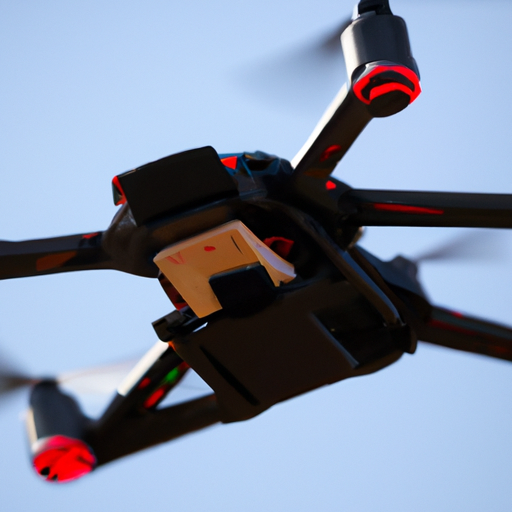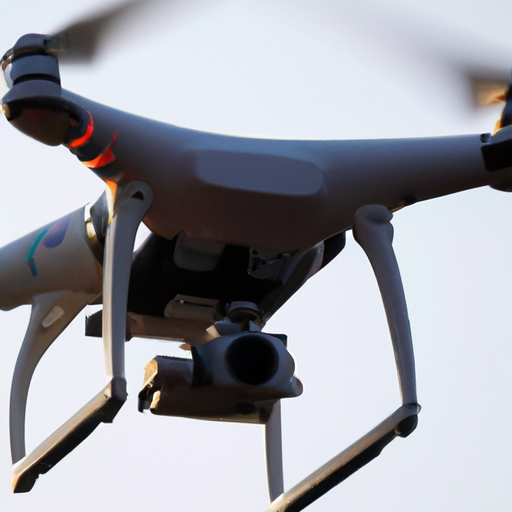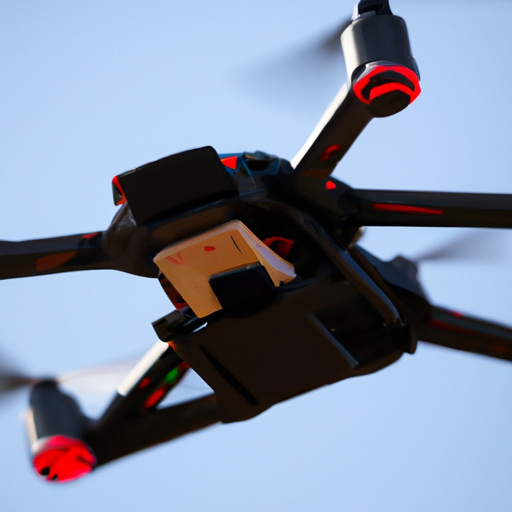If you’re in the market for a consumer camera drone, one of the important factors that you might consider is its range. The range refers to the maximum distance the drone can fly away from its controller while maintaining a stable connection. Whether you’re a professional photographer looking to capture stunning aerial shots or an enthusiast wanting to explore the skies, understanding the range of consumer camera drones can help you make an informed choice. In this article, we will explore the typical range of most consumer camera drones and highlight some key factors that may affect their performance.
Range of Consumer Camera Drones
Introduction to Camera Drones
Camera drones have gained immense popularity in recent years due to advancements in technology, making it easier and more affordable for consumers to enjoy aerial photography and videography. These unmanned aerial vehicles (UAVs) equipped with cameras provide a unique perspective and have become a favorite among hobbyists, photographers, and videographers alike. Understanding the factors that affect the range of consumer camera drones is crucial for anyone looking to invest in one.
Factors Affecting Range
Several factors contribute to the range of consumer camera drones. It is important to consider these factors when choosing a drone to ensure that it meets your specific needs and requirements.
Battery Capacity
One of the primary factors that determine the range of a consumer camera drone is the battery capacity. Drones rely on battery power to operate, and the size and capacity of the battery directly affect the flight time and range. Drones with larger capacity batteries generally offer longer flight times and increased range, while those with smaller batteries will have more limited capabilities.

Transmission System
The transmission system of a drone plays a significant role in its range. Many consumer camera drones use radio frequency (RF) technology to establish a connection between the drone and the controller. However, the specific type and quality of the transmission system can vary among different models, resulting in differences in range capabilities. Higher-end drones generally employ advanced transmission systems that offer longer ranges and more stable connections.
Interference and Signal Strength
The presence of obstacles and environmental factors can significantly affect the range of a consumer camera drone. Buildings, trees, and other objects can obstruct the drone’s signal, reducing its range. Additionally, signal interference from other devices operating on similar frequencies can also impact the drone’s signal strength. Optimal flight conditions without interference and strong signal strength will result in a greater range for the drone.
Size and Weight of Drone
While not as prominent a factor as battery capacity or transmission system, the size and weight of a consumer camera drone can still influence its range. Larger and heavier drones may require more propulsive force to maintain flight, which can impact the overall flight time and range. Additionally, the aerodynamic efficiency of a drone plays a role, with sleeker and more streamlined designs generally offering better range capabilities.

Battery Capacity
Battery capacity is a crucial factor that determines not only the flight time but also the overall range of a consumer camera drone. A more significant battery capacity allows the drone to stay airborne for more extended periods, resulting in a greater range. Lithium polymer (LiPo) batteries are commonly used in consumer camera drones due to their high energy density and ability to deliver reliable power. However, advancements in battery technology continue to improve, resulting in longer flight times and increased ranges for consumer drones.
Transmission System
Consumer camera drones employ various types of transmission systems to establish a connection between the drone and the controller. The most common transmission systems used are radio frequency (RF) and Wi-Fi. RF transmission systems, such as those operating on the 2.4GHz or 5.8GHz frequency bands, are known for their long-range capabilities and stable connections. Wi-Fi transmission systems, on the other hand, typically have shorter ranges but offer the advantage of live video streaming to a mobile device. When choosing a consumer camera drone, it is essential to consider the type of transmission system it utilizes and its range capabilities.
Interference and Signal Strength
When flying a consumer camera drone, various factors can interfere with the signal and affect its range. Obstacles such as buildings, trees, and hills can block or weaken the drone’s signal, resulting in a reduced range. Additionally, other devices operating on similar frequencies, including Wi-Fi networks and other drones, can cause signal interference and impact the signal strength. To maximize the range of a consumer camera drone, it is crucial to fly in open areas with minimal obstructions and avoid locations with heavy electronic interference.
Size and Weight of Drone
Although not as commonly discussed as other factors, the size and weight of a consumer camera drone can still influence its range. Larger and heavier drones typically require more power to fly, resulting in shorter flight times and reduced range. Additionally, the aerodynamic efficiency of a drone plays a role, with sleeker and more streamlined designs offering better range capabilities. When considering the range of a consumer camera drone, it is advisable to take into account its size, weight, and overall design.
Common Range in Consumer Camera Drones
Entry-level Drones
Entry-level consumer camera drones typically offer a range of 100-300 meters. These drones are designed for beginners and casual users who do not require extensive distances. They often come equipped with basic features and have limited flight capabilities. Some popular entry-level drones include the DJI Mavic Mini and the Holy Stone F181C.
Mid-range Drones
Mid-range consumer camera drones typically offer a range of 500-1000 meters. These drones are suitable for enthusiasts and hobbyists who require a more extended range for their aerial photography and videography needs. They often come equipped with more advanced features and have better flight capabilities compared to entry-level drones. Some popular mid-range drones include the DJI Mavic Air 2 and the Autel Robotics EVO II.
Professional Drones
Professional consumer camera drones offer an extended range of over 1000 meters, with some models reaching several kilometers. These drones are designed for professional photographers and videographers who require the ability to capture footage from great distances. They come equipped with advanced features, high-quality cameras, and unparalleled flight performance. Some popular professional drones include the DJI Phantom 4 Pro and the Autel Robotics X-Star Premium.
Conclusion
The range of consumer camera drones varies significantly depending on several factors. Understanding the impact of battery capacity, transmission system, interference, signal strength, and the size and weight of the drone is essential in selecting the right drone for your needs. Whether you are a beginner looking for an entry-level drone or a professional seeking an advanced model, consider the range capabilities alongside other features and limitations to ensure a satisfying aerial photography and videography experience.



